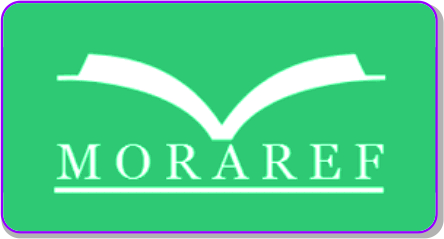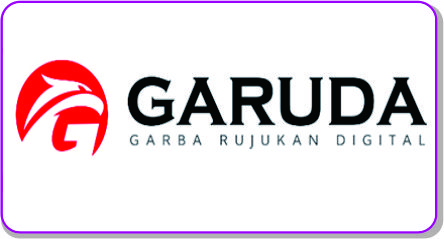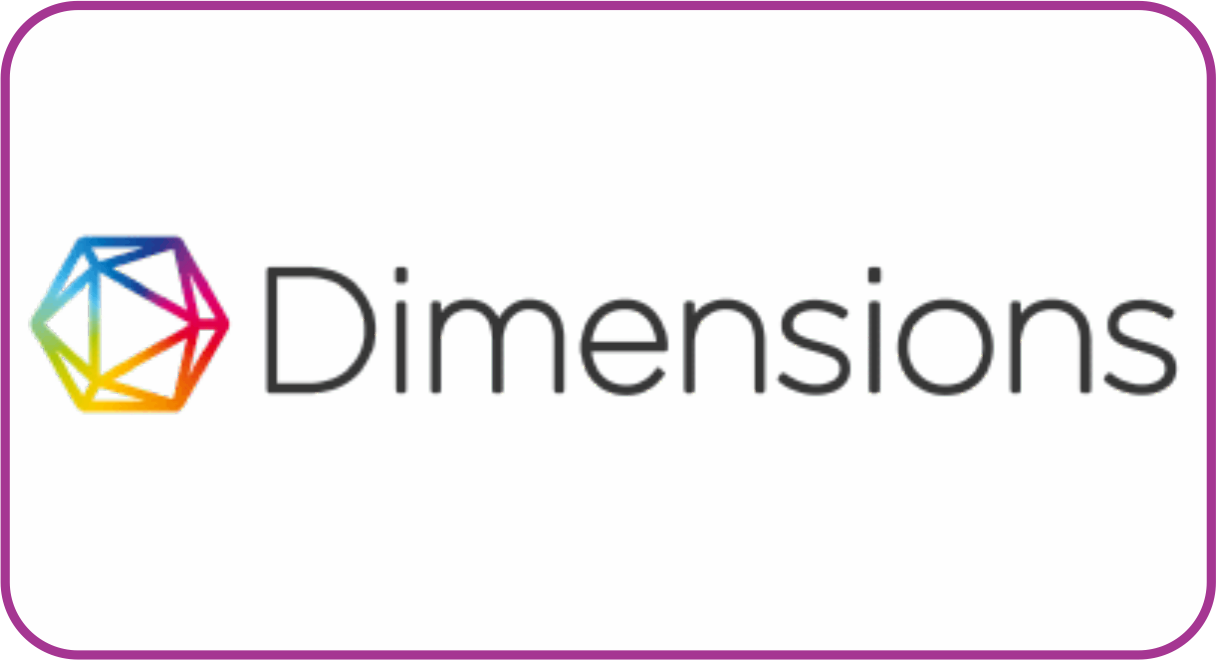Hubungan Media Sosial TikTok Terhadap Kemampuan Komunikasi Matematis Siswa
DOI:
https://doi.org/10.30983/lattice.v3i2.7596Keywords:
TikTok, Kemampuan, Komunikasi MatematisAbstract
Social media TikTok is a digital platform that is popular among teenagers and young people, often used as a medium for mathematical learning. TikTok is a platform for them to present short explanatory videos on various mathematical topics, facilitating creative and interactive mathematical communication. Although TikTok is generally known as a means of entertainment, its potential use in the context of mathematics education has not been widely explored. This research explores the relationship between junior high school students' interactions with TikTok as a mathematics learning medium and its impact on their mathematical communication skills. Through a quantitative approach with correlational research methods, data was collected through questionnaires and mathematical communication ability tests. Class VIII 2 was selected as a sample through a simple random sampling technique in the Bekasi area. The results of the analysis using Spearman's Rank correlation show that, although TikTok is often used as a mathematics learning medium, junior high school students' mathematical communication skills tend to be low or even insignificant..
Â
Media sosial sosial TikTok merupakan sebuah platform digital yang terkenal di kalangan remaja dan kaum muda, seringkali digunakan sebagai media pembelajaran matematis. TikTok menjadi wadah bagi mereka untuk menyajikan video penjelasan singkat mengenai berbagai topik materi matematika, memfasilitasi komunikasi matematis yang kreatif dan interaktif. Meskipun TikTok pada umumnya dikenal sebagai sarana hiburan, potensi pemanfaatannya dalam konteks pendidikan matematika masih belum banyak dieksplorasi. Penelitian ini difokuskan pada penyelidikan hubungan antara interaksi siswa SMP dengan TikTok sebagai media pembelajaran matematika dan dampaknya terhadap kemampuan komunikasi matematis mereka. Melalui pendekatan kuantitatif dengan metode penelitian korelasional, data dikumpulkan melalui kuesioner angket dan tes kemampuan komunikasi matematis. Kelas VIII 2 dipilih sebagai sampel melalui teknik pengambilan sampel acak sederhana di sebuah daerah Bekasi. Hasil analisis menggunakan korelasi Rank Spearman menunjukkan bahwa, meskipun TikTok sering digunakan sebagai media pembelajaran matematis hubungannya dengan kemampuan komunikasi matematis siswa SMP cenderung rendah atau bahkan tidak signifikan.References
Nadya Putri Amelia and Samsul Ma’arif, “Pengaruh Pengguna Media Sosial Tiktok Terhadap Kemampuan Numerasi Matematika Siswa Kelas Iv Di Sd,†J. Cakrawala Pendas, vol. 8, no. 4, pp. 1201–1207, 2022, doi: 10.31949/jcp.v8i4.2885.
. A. Mitha Iltavia, “PENERAPAN MODEL TIPE PAIR CHECK DISERTAI HAND OUT x,†J. Lemma, vol. 6, no. 2, pp. 84–95, 2020.
D. Chaffey, “Global social media statistics research summary 2023.â€
A. M. Kaplan and M. Haenlein, “Users of the world, unite! The challenges and opportunities of Social Media,†Bus. Horiz., vol. 53, no. 1, pp. 59–68, 2010, doi: 10.1016/j.bushor.2009.09.003.
A. I. Wijaya, “Efektivitas Penggunaan Tiktok Terhadap Respon dan Hasil Belajar Siswa Pada Materi Gerak Lurus,†2023.
N. Fauziyah, A. Ramadhini, K. E. Wardhana, and A. F. S. Hidayat, “Penggunaan Aplikasi TikTok sebagai Media Pembelajaran Untuk Meningkatkan Minat Belajar Peserta Didik di Era Globalisasi Digital,†J. Tarb. Ilmu Kegur. Borneo, vol. 3, no. 3, pp. 181–193, 2022, doi: 10.21462/educasia.v6i3.126.
A. Nyst, “134 Social Media Statistics You Need To Know For 2023.â€
A. Fiallos, C. Fiallos, and S. Figueroa, “Tiktok and education: Discovering knowledge through learning videos,†2021 8th Int. Conf. eDemocracy eGovernment, ICEDEG 2021, pp. 172–176, 2021, doi: 10.1109/ICEDEG52154.2021.9530988.
N. S. Ramdani, H. Nugraha, and A. Hadiapurwa, “Potensi Pemanfaatan Media Sosial Tiktok Sebagai Media Pembelajaran Dalam Pembelajaran Daring,†Akademika, vol. 10, no. 02, pp. 425–436, 2021, doi: 10.34005/akademika.v10i02.1406.
A. Dewanta, “Pemanfaatan aplikasi Tik Tok sebagai media pembelajaran bahasa Indonesia,†J. Pendidik. dan Pembelajaran Bhs., vol. 9, no. 2, pp. 79–85, 2020.
A. Bhandari and S. Bimo, “Why’s Everyone on TikTok Now? The Algorithmized Self and the Future of Self-Making on Social Media,†Soc. Media Soc., vol. 8, no. 1, 2022, doi: 10.1177/20563051221086241.
A. N. Vidyastuti, M. M. Effendi, and R. Darmayanti, “Aplikasi Tik-Tok: Pengembangan Media Pembelajaran Matematika Materi Barisan dan Deret Untuk Meningkatkan Minat Belajar Siswa SMA,†J. Math Educ. Nusant. Wahana Publ. Karya Tulis Ilm. di Bid. Pendidik. Mat., vol. 8, no. 2, pp. 91–106, 2022, doi: 10.29407/jmen.v8i2.18267.
C. L. Zahari and Syahwitri, “Tiktok Social Media On Students’ Mathematical Understanding Ability,†Daya Mat. J. Inov. Pendidik. Mat., vol. 11, no. 1, p. 1, 2023, doi: 10.26858/jdm.v11i1.44710.
I. S. Muflihah, N. Ratnaningsih, and V. Apiati, “Analisis Kemampuan Koneksi Matematis Ditinjau Dari Gaya Berpikir Peserta Didik,†J. Authentic Res. Math. Educ., vol. 1, no. 1, pp. 68–77, 2019.
F. Noor and M. G. Ranti, “Hubungan antara kemampuan berpikir kritis dengan kemampuan komunikasi matematis siswa SMP pada pembelajaran matematika,†Math Didact. J. Pendidik. Mat., vol. 5, no. 1, pp. 75–82, 2019, doi: 10.33654/math.v5i1.470.
M. A. Rasyid, “Kemampuan Komunikasi Matematis Dalam Pembelajaran Matematika,†J. Edukasi Kaji. Ilmu Pendidik., vol. 5, no. 1, pp. 77–86, 2020, doi: 10.51836/je.v5i1.116.
R. Riyanti and D. Mardiani, “Kemampuan Komunikasi Matematis Siswa antara Model Pembelajaran Course Review Horay dan STAD,†Plusminus J. Pendidik. Mat., vol. 1, no. 1, pp. 125–134, 2021, doi: 10.31980/plusminus.v1i1.1031.
L. Kodariyati and B. Astuti, “Pengaruh Model Pbl Terhadap Kemampuan Komunikasi Dan Pemecahan Masalah Matematika Siswa Kelas V Sd,†J. Prima Edukasia, vol. 4, no. 1, p. 93, 2016, doi: 10.21831/jpe.v4i1.7713.
A. Fauziah, Pengaruh Penggunaan Media Sosial Tik Tok Terhadap Pengungkapan Diri ( Self Disclosure ) Siswi Sekolah Menengah Kejuruan Negeri (SMKN) 10 Kota Bekasi. 2021.
E. F. Ningsih, “Teori sosial kognitif dan relevansinya bagi pendidikan di Indonesia,†Humanika, vol. 23, no. 1, pp. 21–26, 2023, doi: 10.21831/hum.v23i1.29307.
R. Junco, G. Heiberger, and E. Loken, “The effect of Twitter on college student engagement and grades,†J. Comput. Assist. Learn., vol. 27, no. 2, pp. 119–132, 2011, doi: 10.1111/j.1365-2729.2010.00387.x.
R. Junco, “Too much face and not enough books: The relationship between multiple indices of Facebook use and academic performance,†Comput. Human Behav., vol. 28, no. 1, pp. 187–198, 2012, doi: 10.1016/j.chb.2011.08.026.
P. Escamilla-Fajardo, M. Alguacil, and S. López-Carril, “Incorporating TikTok in higher education: Pedagogical perspectives from a corporal expression sport sciences course,†J. Hosp. Leis. Sport Tour. Educ., vol. 28, p. 100302, 2021, doi: https://doi.org/10.1016/J.JHLSTE.2021.100302.
Z. N. Khlaif and S. Salha, “Using TikTok in Education: A Form of Micro-learning or Nano-learning?,†vol. 12, pp. 213–218, 2021, doi: https://doi.org/10.30476/IJVLMS.2021.90211.1087.
N. Dasoo, “The Innovative use of social media for teaching and learning: A case study at the University of Johannesburg,†2018 Int. Conf. Multidiscip. Res., 2022, doi: https://doi.org/10.26803/myres.2022.03.
R. P. Putri, “Tiktok as an Online Learning Media During a Pandemic,†Proc. 6th Int. Conf. Educ. Soc. Sci. (ICESS 2021), 2021, doi: https://doi.org/10.2991/assehr.k.210918.052.
A. Salsabila, A. Rahmah, M. Kurniadi, M. Habibburrahman, and R. A. Pratama Galih, “TikTok as Teaching Assistance for Speaking Skills: a Systematic Review,†Conf. English Lang. Teach., 2021, doi: https://doi.org/10.24090/celti.v1.25.
C. Pramono, Gangsar Teguh &Hasanudin, “Pemanfaatan Aplikasi Tiktok Sebagai Media Pembelajaran Matematik,†Pros. Semin. Nas., pp. 979–985, 2023.
Salmaa, “Penelitian Korelasional : Pengertian, Ciri, Langkah, dan Contoh,†deepublish.
K. E. Lestari and M. R. Yudhanegara, PENELITIAN PENDIDIKAN MATEMATIKA, Cetakan Ke. Bandung: PT Refika Aditama, 2018.
S. A. Lesik, APPLIED STATISTICAL INFERENCE WITH MINITAB, Second Edi. 2019.
S. Sugiyono, Metodologi Penelitian Kualitatif Kuantitatif dan R&D. Alfabeta, 2017.
D. Yuwono, “Perbedaan Statistik Parametrik dan Statistik Non Parametrik [Contoh].â€
Azia, “Perbedaan Statistik Parametrik dan Non-Parametrik.â€
E. Rahmawati, “Dampak Penggunaan Aplikasi TikTok Terhadap Perilaku Belajar Siswa,†Universitas Islam Negeri Syarif Hidayatullah, 2023.
A. Murdikah, T. Sudaryana, L. Hardiana, and A. Nurfitriyah, “Tinjauan Penerapan Teori Skemp Terhadap Pemahaman Fungsi Invers Pada Guru Matematika,†J. Penelit. dan Pengajaran Mat., vol. 3, pp. 125–135, 2021.
F. E. Giriansyah, H. Pujiastuti, and I. Ihsanudin, “Kemampuan Pemahaman Matematis Siswa Berdasarkan Teori Skemp Ditinjau dari Gaya Belajar,†J. Cendekia J. Pendidik. Mat., vol. 7, no. 1, pp. 751–765, 2023, doi: 10.31004/cendekia.v7i1.1515.
S. Fatmala Sari, A. Amrullah, N. Kurniati, and S. Azmi, “Analisis Kemampuan Pemahaman Matematis Ditinjau dari Teori SKEMP Materi Segi Empat,†J. Ilm. Profesi Pendidik., vol. 7, no. 4, pp. 2060–2070, 2022, doi: 10.29303/jipp.v7i4.873.
W. Dianti, Zubaidah, and Hamdani, “Kemampuan Komunikasi Matematis Siswa Dalam Materi Himpunan Di Kelas VII Smp Negeri 7 Kubu Raya,†J. Pendidik. dan Pembelajaran Khatulistiwa, vol. 7, no. 7, pp. 1–8, 2018.
R. A. Nurhasanah, S. B. Waluya, and I. Kharisudin, “Kemampuan Komunikasi Matematis dalam Menyelesaikan Masalah Soal Cerita,†Semin. Nas. Pascasarj. 2019, no. 2017, pp. 769–775, 2019.
M. A. K. Halliday, Bahasa, Konteks, dan Teks: Aspek-aspek Bahasa dalam Pendangan Semiotik Sosial. Gadjah Mada University Press, 1992.
A. Rahmah and K. E. Lestari, “Hubungan Self-Concept Matematis dengan Kemampuan Penalaran Adaptif Matematis Siswa,†no. September, pp. 143–151, 2023
Downloads
Additional Files
Submitted
Accepted
Published
Issue
Section
License
Authors who publish with Lattice Journal : Journal of Mathematics Education and Applied agree to the following terms: Authors retain copyright and grant the Lattice Journal : Journal of Mathematics Education and Applied right of first publication with the work simultaneously licensed under a Creative Commons Attribution License (CC BY-SA 4.0) that allows others to share (copy and redistribute the material in any medium or format) and adapt (remix, transform, and build upon the material) the work for any purpose, even commercially with an acknowledgement of the work's authorship and initial publication in Lattice Journal : Journal of Mathematics Education and Applied. Authors are able to enter into separate, additional contractual arrangements for the non-exclusive distribution of the journal's published version of the work (e.g., post it to an institutional repository or publish it in a book), with an acknowledgement of its initial publication in Lattice Journal : Journal of Mathematics Education and Applied. Authors are permitted and encouraged to post their work online (e.g., in institutional repositories or on their website) prior to and during the submission process, as it can lead to productive exchanges, as well as earlier and greater citation of published work (See The Effect of Open Access).








